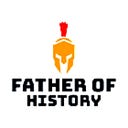The Boeotian Shield: The Theban Military Innovation
The ancient world witnessed a multitude of military innovations that shaped the course of history. Among these innovations, the Boeotian Shield, associated with the Theban military, stands out as a distinctive and influential development. The Battle of Leuctra in 371 BCE marked a turning point in Greek military history, and at the heart of Theban's success was the ingenious use of the Boeotian Shield. In this article, we delve into the origins, design, and strategic implications of the Boeotian Shield, examining its role in reshaping the battlefield dynamics of ancient Greece.
I. Historical Context: The Rise of Thebes
Before delving into the specifics of the Boeotian Shield, it’s crucial to understand the historical context that led to its development. Thebes, traditionally overshadowed by the military might of Sparta and Athens, saw a rise in prominence under the leadership of Epaminondas. The Theban Hegemony, a period marked by Theban dominance in central Greece, laid the groundwork for the innovations that would come to define the Battle of Leuctra.
II. The Evolution of Hoplite Warfare
The use of the hoplite phalanx was a fundamental aspect of ancient Greek warfare, characterized by heavily armored soldiers forming a tightly packed infantry formation. However, the traditional hoplite shield, known as the hoplon, had limitations in terms of maneuverability and defensive capabilities. The Thebans recognized the need for a shield that could address these shortcomings, leading to the development of the Boeotian Shield.
III. Design and Characteristics of the Boeotian Shield
The Boeotian Shield represented a departure from the traditional circular hoplon. It featured an oval shape, providing greater protection to the soldier’s body while allowing for increased mobility on the battlefield. The shield’s design incorporated advanced metallurgy and reinforced construction, offering superior defense against both ranged and melee attacks. The curvature of the shield also provided better coverage for the soldiers standing next to them, fostering a sense of collective protection within the phalanx.
IV. The Boeotian Shield in Action: The Battle of Leuctra
The true test of the Boeotian Shield came at the Battle of Leuctra, where Epaminondas led the Theban forces against the formidable Spartans. The innovative use of the shield played a pivotal role in the Theban victory. The oblique formation, combined with the enhanced protection afforded by the Boeotian Shield, allowed Theban soldiers to withstand the impact of the Spartan assault and eventually break their lines.
V. Strategic Implications and Legacy
The success of the Boeotian Shield at Leuctra had far-reaching consequences for Greek military tactics. The Thebans demonstrated that a well-designed shield, coupled with strategic innovation, could neutralize the previously invincible hoplite phalanx of the Spartans. The legacy of the Boeotian Shield extended beyond the battlefield, influencing subsequent military developments in ancient Greece.
VI. Criticisms and Controversies
While the Boeotian Shield proved effective, it was not without its critics. Some traditionalists argued against deviating from the time-honored hoplon design, citing the need for continuity in military tradition. Additionally, questions arose regarding the adaptability of the Boeotian Shield in different terrains and against various opponents.
VII. The Enduring Impact on Military Technology
The Boeotian Shield’s impact extended beyond its immediate historical context. Its design principles influenced subsequent developments in military technology, inspiring adaptations and improvements in defensive weaponry throughout the ancient world. The lessons learned from the Battle of Leuctra resonated for generations, leaving an indelible mark on the evolution of military tactics.
Conclusion:
The Boeotian Shield stands as a testament to the power of innovation in shaping the course of history. Its introduction and successful implementation by the Thebans at the Battle of Leuctra not only secured a significant victory but also redefined the possibilities of ancient Greek warfare. The Boeotian Shield’s legacy serves as a reminder that, in the ever-changing landscape of conflict, those who dare to innovate often emerge victorious.
